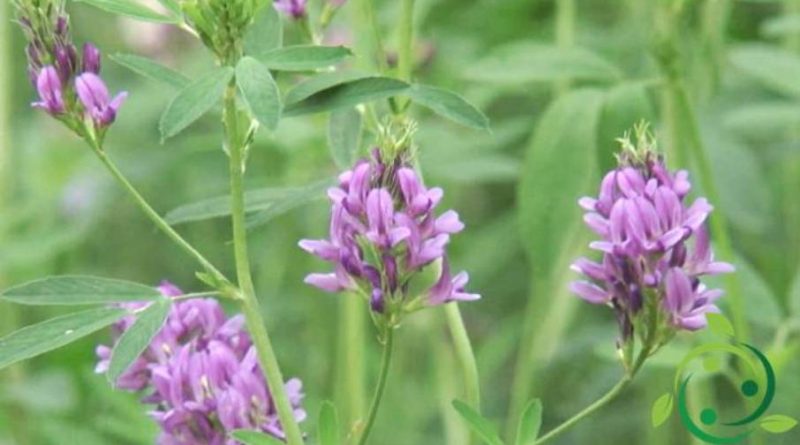How to grow alfalfa
How to grow alfalfa
Alfalfa (Medicago sativa L.) also called grass Spain, or even alfalfa (from Arabic al-fáṣfaṣa “forage;” errata “alpha-alpha”) is a herbaceous species belonging to the family Fabaceae (Leguminose). In this sheet we see the essential aspects for how to grow alfalfa and its properties and uses. Alfalfa is a lively herbaceous plant that could live up to 10-15 years in suitable environments, but which in general in culture lives much less (3-4 years) due to various adversities. It is a plant provided with a very strong root-shaped root that can reach even more than 1 meter of depth, while from the basement collar or crown stem more or less erect hollow stems that can exceed even the meter in height. The leaves, which are the most nutritious part of the plant, are trifoliated with each ovate – lanceolate leaf with slightly denticulated margin only in the upper third. The flowers of alfalfa are gathered in axillary racemes with inflorescences formed by 10-20 small flowers with a blue, violet or yellow corolla.
It produces spiraled vegetables with 2-6 seeds, very small and very light, of a greenish-yellow color and with a high capacity for germination.
For the cultivation of alfalfa, remember that it prefers warm and sunny places while it fears the cold and is very resistant to hot and dry climate. The preferred soil is calcareous, fresh deep and well drained, with non-acidic pH. Regarding the irrigation needs, the alfalfa grows with rainwater but should be irrigated only in the case of periods of prolonged and persistent drought. In areas with warm and dry arid climate, irrigation must be carried out regularly to obtain constant and high production.
For fertilization it is advisable not to make fertilizers but to follow it to crops that use fertilization such as grass or even vegetables (which will have benefited from potassium and phosphorus). Alfalfa can be sown on bare soil or associated with other cereals in two periods of the year: late winter or late summer (depending on irrigation availability). You can sow broadly, with burial of the seed at a maximum depth of 30 mm, in rows about 15 cm apart. On average it takes about 15-20 kg of seeds per hectare of land.
The collection of alfalfa must be done in full bloom to obtain a more nutritious and better quality forage. Remember that after the first mowing or after each subsequent cut the alfalfa regenerates new vegetation with better organoleptic characteristics in terms of palatability, digestibility. The mowed alfalfa is left to dry in the air and in the sun and then pressed and stored in the form of bales in dry places.
Among the alfalfa parasites we mention some pathogenic bacteria such as: the Corynebacterium insidiosum which causes in a short time the withering of the stems and the leaves; the Pseudopeziza of alfalfa a pathogen that seriously damages the leaves. Also some fungal diseases can cause some damage we remember: the Anthracnose that manifests itself with diffuse necrotic spots on the leaves; the Mal vinato, a fungus that spreads from the roots of the plant to the aerial part causing its rotting and therefore death; the Fusarium roseum which causes root rot. Among the harmful insects we remember: the Apion (clover’s awl) which damages leaves and stems with its mouthparts; Cecidomia, which is a diptera that lays its eggs in the floral buttons causing the abortion of the flowers. Alfalfa is attacked by the cuscuta which is a parasitic plant of the Convolvulaceae family. This plant wraps the stems with its yellow spirals and can cause death by suffocation.

